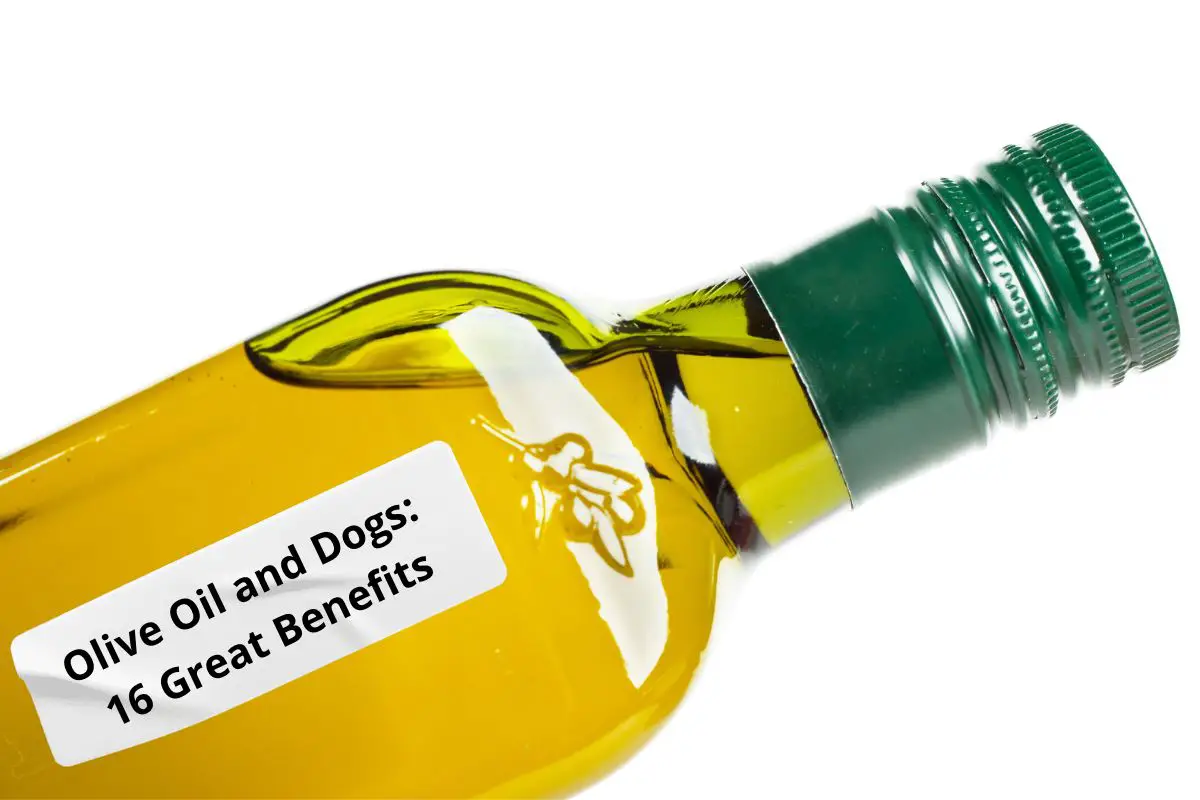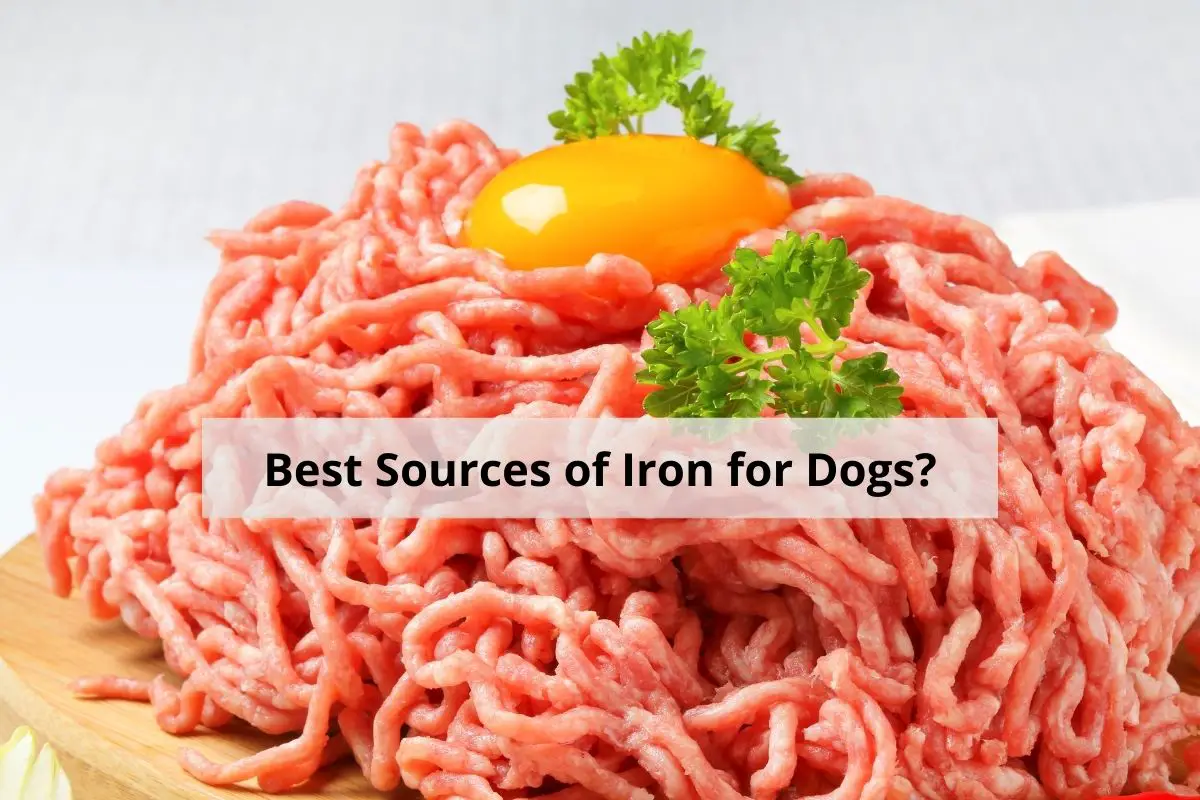This post contains affiliate links.
Knowing what is good and not so good for your furry friend will make a real difference in their livelihood. Many of us want to eat good food that keeps us energized and is free from stuff that either doesn’t benefit us nutritionally or would be unappetizing to most people. With this in mind, doesn’t your dog deserve the same quality you expect for yourself?
Feed Your Best Friend Better by Rick Woodford is an excellent guide on selecting healthy food for your dog. It contains over 85 recipes of both meals and treats that use quality ingredients, and includes information on how to properly feed your dog and check ingredients on packaged pet food.
In this review, we will be discussing the contents of the book and explaining the author’s viewpoint on how dogs should be eating. If you’d like to learn more about this helpful book, we encourage you to read on!
Table of Contents
Why the Book Exists
How this book came to be is a heartwarming tale. Rick Woodford learned that his furry friend, Jackson, was diagnosed with cancer. In order to make sure the pup lived the best life possible within the time he had left, Rick studied dog nutrition and began making homemade food for Jackson using only the best wholesome ingredients.
After he began feeding the pup these meals, something unexpected happened: Jackson’s cancer went away, and lived happily four more years afterward. Rick was naturally overjoyed that his intentions and a new understanding of dog nutrition saved his dog’s life. He knew what to do after this: educate others on how to feed their dogs the same quality food that saved Jackson’s life.
The book provides detailed but easy to understand information on what dogs need, want they shouldn’t eat, and how you can incorporate their nutritional needs into homemade food that is both affordable and easy to make. It will also tell you what to look for when searching for prepackaged dog food.
It is worth noting that the book is written in a friendly manner and isn’t trying to “police” dog food. The author only wanted to write a book that would be helpful to as many people as possible so that their dogs can live the best lives possible.
Contents of the Book
Feed Your Best Friend Better is not just a recipe book. Rather it is more of a detailed guide that contains helpful recipes to get you started making healthy and delicious meals for your dog. There are many people who have read it and haven’t made any of the recipes in the book. Of course, we recommend at least trying a couple that sounds like it could work for your dog, but it isn’t totally necessary.
Nutrients That Dogs Need
The book explains in detail exactly what dogs need. Dogs are omnivores, meaning they can eat both plants and meat, and thus their nutritional needs are more complex than a cat, for example. Besides water, dogs need six key nutrients to stay healthy:
- Protein
- Carbs
- Fats
- Vitamins
- Minerals
- Fiber
All of these together provide a well-balanced diet for your pup. However, it is important to get these nutrients to your dog correctly, which is what the book describes very well.
There is an order of importance when it comes to these nutrients, with protein being at the top. Getting the ratios correct is going to be crucial for a dog’s diet, which is why quality pet food has heavy research behind it.
So, what foods can you give your dog to ensure they receive a balanced diet? The book explains that fresh, unprocessed foods are what you should be looking for when feeding your dog some homemade food.
Such ingredients/foods include common things you likely have in your refrigerator and pantry right now:
- Eggs
- Sweet potatoes
- Beef
- Chicken
- Carrots
- Healthy grains
Along with this, canola oil, eggshell powder, and nutritional yeast are also mentioned and are what many recipes in the book use. There’s a ton of variety when it comes to homemade dog food, and it shows with the massive amount of recipes the book contains.
One reader noted that many of the recipes resemble “bodybuilder food,” and that is quite accurate! Dogs need lots of protein like a bodybuilder, but they also need all the other nutrients to back it up for a strong and healthy body.
And hey, nothing is stopping you from trying a recipe for yourself. After all, this is just food humans regularly eat prepared differently. However, you may want to add seasoning to please the human palate!
Homemade Dog Food Doesn’t Have to Be Expensive
It is understandable to think that homemade dog food is expensive. After all, the discussion thus far has been about fresh food, which is thought to be costly. However, this isn’t the case. While it is true that certain ingredients such as beef are costly, there are other ingredients such as chicken, eggs, carrots, potatoes, and broccoli, which are very affordable.
In fact, homemade dog food can be cheaper than quality commercial pet food if you do it right, and you get it to as low as $1.50 per pound. With this in mind, not only are you giving your pup food that is significantly better than the vast majority of pet food on the market, but you are also saving yourself a pretty penny on top of it.
What if You Don’t Feel Like Cooking Every Day?
There is a reason why takeout and delivery services are huge industries. After a long day of work or just wanting a lazy day, cooking is one of the last things on a lot of people’s minds. We’ve all been told that cooking is healthier and cheaper than premade food, but it is safe to say that most of us enjoy the convenience of already prepared food.
What’s great about commercial dog food is that you don’t have to do anything. Just open a bag or pop open a can lid, and you are done. You can even buy an automatic dog feeder that gives your pooch meals throughout the day without you doing anything. If you are already feeding your dog quality dry food (more on that later), then you are doing good, but it is still helpful to mix things up and include fresh meals.
The book talks about how commercial dog food can be a great supplement to a diet, but the main focus here is providing your best friend with fresh ingredients as the main source of their nutrition.
Luckily, you don’t have to cook every day to provide your dog with real food. Many of the recipes are either they are quick to prepare, or you can store them in the freezer for convenience throughout the week. And don’t worry about storage space or mess. There are recipes in the form of patties or meatballs which take up minimum space and provide convenient portioning.
In short, prep isn’t too bad for homemade dog food, and once you find a recipe that works for your dog and get into the habit of prepping his meals every week, it will just become routine like anything else. If there are days where you can’t/don’t want to prep after the homemade food has run out, healthy commercial dog food is more than fine.
Finding Quality Commercial Dog Food
Despite the focus on fresh, unprocessed food in the book, it also goes over what to look for in pre packaged dog food.
The author is not against dog food, rather he is against poor-quality dog food, and there are a lot of them on the market. Many people pick up bottom-tier food that is essentially junk food for their dog that contains fillers that add bulk, but no nutritional value and animal remains that humans won’t eat.
What’s the consequence of low-quality dog food? Well, for starters, they’ll need to eat more of it to feel satisfied and energized. If you are free-feeding, this can lead to obesity, and even if you aren’t free-feeding, there might be a real reason a dog is constantly begging for food—they aren’t getting enough nutrients.
Think about how you’d feel after 2 hours eating a $1 burrito from Taco Bell vs. a salad loaded with veggies and protein for the same amount of calories. The salad is going to keep you full for longer because practically all the ingredients are nutritious. This is why low-quality dog food is closer to fast food for dogs than it is something you’d want to feed them every meal.
Furthermore, there’s going to be more bathroom breaks, and we are confident nobody wants that—especially when you aren’t home at the time, and Fido can’t hold it any longer.
So does this mean you have to get the most top-of-the-line dog food on the market that costs a pretty penny? Absolutely not. There is affordable veterinarian-recommended dog food from brands you likely recognize, such as Purina Pro Plan. Quality dog food will use ingredients that serve a purpose and provide your dog with the balanced nutrition they need to thrive.
Rick explains in detail what you should be looking for in dog food, such as no by-products, and ensuring that meat is the first ingredient. Remember, when we mentioned that healthy ingredients could be cheap? This applies here, as well. Chicken, rice, potatoes, and healthy grains are all very affordable ingredients that allow affordable healthy dog food to exist.
Of course, you can spring for higher-end options, but there are generally diminishing returns once you go past “mid-tier” or “upper mid-tier” dog food. Brands such as Taste of the Wild use very good ingredients that are a tad more pricey than something just “good,” but it is nowhere near as expensive as the top of the line dry food like Orijen.
After reading the book, we came to the conclusion that you are best sticking with mid-level dog food. They use quality ingredients and are nutritionally balanced, and your pup will love it all the same. Save that significant amount of extra money for emergency vet bills for peace of mind.
Dog Behavior and Food
It is no secret that dogs need some level of obedience training around food or simply need to slow down when eating. This is why we found it incredibly helpful that the author included sections dedicated to behaviors such as:
- Begging
- Early morning wake-up calls
- Speed eating
- Picky eating
- Food aggression
The author also talks about where you should set the bowl, and when meals should be served. Feeding a dog isn’t just about picking the right food. It is also setting them on the right path and addressing behavioral issues that are harmful to both them and others around them.
If you have a difficult eater, this book provides information on how you can make them more obedient and stop undesirable problems.
For example, if your dog is refusing to eat because he would rather eat your food. Don’t reward this behavior by giving him what we want; this will only teach him that he will get his way.
Your pup needs to learn that food is a valuable resource, and a good way to do that is to set his meal out for 30 minutes and take it away if he is still refusing to eat. He will eventually get the message that he needs to eat when food is provided.
This is how wolves think. They need to eat every molecule of food when it is available because they know how valuable it is—if they don’t get their fill now, who knows when their next meal will be?
But since we are conveniently talking about a book containing loads of recipes using “people food,” you can pick a recipe that suits your dog. He’ll more likely be happier eating fresh food over kibble, circumventing picky eating behavior. Dogs enjoy food that smells and tastes meaty and dry food is definitely not the same as freshly prepared meat.
Some people will say dogs do not care about the taste, but this is widely disproven. While some dogs will eat everything literally, there are enough examples showing that dogs have a strong preference for certain foods over others. It depends on the individual dog at the end of the day.
Here is a video demonstrating another technique. There are different ways to approach picky eating!
Transitioning to New Food
Since the book’s name is heavily encouraging you to change your dog’s diet for the better, it also includes a section regarding how to change your dog’s diet safely.
Dogs have a relatively sensitive digestive system that gets thrown out of whack, and if you change their everyday food overnight. This is why making a slow transition is crucial when bettering your pup’s diet.
Safely switching out your dog’s food involves gradually increasing the amount of the new food each day. For example, on day one, you give 25% of the new food and 75% of the old and gradually increase this over 7 to 10 days.
Information like this is why we strongly recommend reading the entire book (minus recipes if you don’t want to) before deciding to change your dog’s food. There is so much important information regarding the specific needs of dogs.
Recipes for Ailing Dogs
Part of the reason there are so many recipes in this book is that it covers specific needs, namely dogs who are sick or have issues such as:
- Allergies
- Arthritis
- Cancer
- Diabetes
- Gastrointestinal diseases
- Heart disease
- Kidney (renal) disease
- Liver disease
- Obesity
It is truly impressive how the author has thought of everything and did a heavy amount of research to put together a recipe list for almost any dog.
Approximately 54% of dogs in the U.S are overweight or obese which is quite alarming and it mostly stems from overfeeding, including constantly feeding table scraps throughout the day, not realizing how much the pup is actually eating.
The book talks about proper portion sizes in another section, helping those who may have been overfeeding, but it also gives recipes that are excellent for weight loss. But what does “diet dog food” even mean?
Dog food meant for weight loss is high in protein and low in calories and fat. The dog is getting enough to eat but at a healthy calorie deficit. The extra protein helps him feel full and remain healthy during his weight-loss journey.
Once the dog has reached the ideal weight, you switch back to regular food and keep him at maintenance calories every day. This is how a human diet works as well, although it is certainly easier for a dog when they don’t have the ability to start binge eating pizza and cookies.
Conclusion
Overall, Feed Your Best Friend Better is an excellent book written by someone who deeply cares about dogs and their health. It was well researched, excellently written, and contains information that every pet parent should know.
What’s great about informational books like this is that everything is in one packaged and written by one person. While online resources are great, you have to know what you are researching beforehand, and different articles on the same website could have been written by separate people. If you have a dog, you owe it to both yourself and your dog to check it out. You can view a sample of the book here.
Sources
- Whole Dog Journal: Fat, protein, and carb levels in dog food
- How Stuff Works: How Important is Protein in a Dog’s Diet?
- M-Dog: Homemade vs. Commercial: Is it Cheaper to make Your Own Dog Food?
- Dinovite: Homemade Dog Food
- Hillspet: How to Handle Dogs That are Picky Eaters
- Pet Place: How Pet Food Can Make Your Dog Sick
- Dog Food Advisor: The Best Dog Foods for Weight Loss
- Goodreads: Feed Your Best Friend Better: Easy, Nutritious Meals and Treats for Dogs
- Vet Innovations: Pet Obesity Epidemic Fact Sheet
Mrdogfood.com is a participant in the Amazon Services LLC Associates Program, an affiliate advertising program designed to provide a means for sites to earn advertising fees by advertising and linking to Amazon.com. We also participate in other affiliate programs which compensate us for referring traffic.





